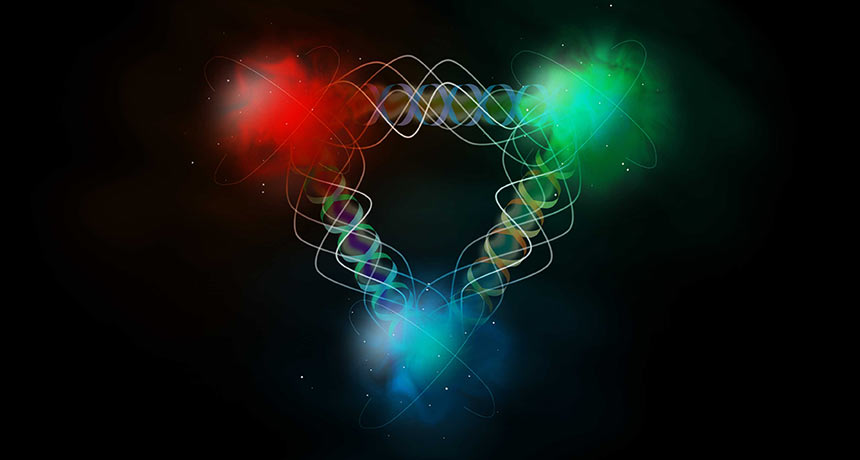An experiment hints at quantum entanglement inside protons
LHC data suggests the subatomic particle’s constituent quarks and gluons share weird links

TIED UP Protons contain smaller particles called quarks and gluons (illustrated). Experimental data suggest that quantum entanglement links those particles with one another.
scify/Shutterstock